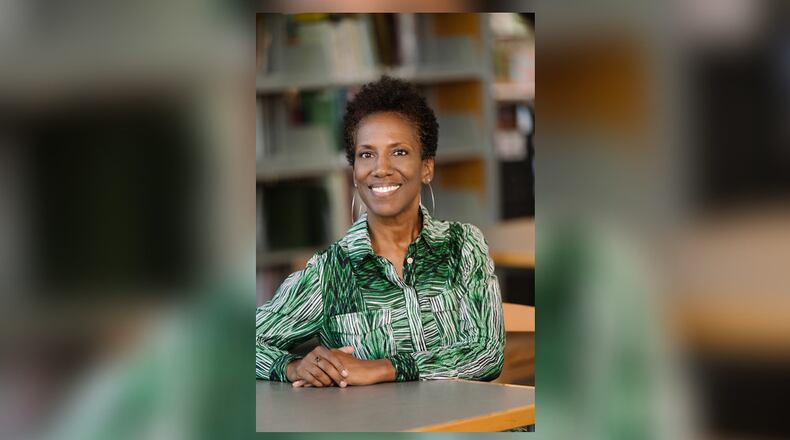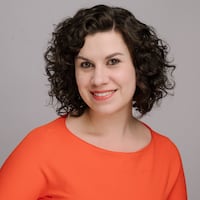“There are so many links in my life,” she said of the connection to Dayton-born poet Paul Laurence Dunbar.
Her educational background is in social work and urban planning and policy, which combined hold up the arts as a community development tool.
“All of the jobs I have had have allowed me to view how the arts influence a community, not just in economic development, but in how we relate to one another.
“The arts are the core of the way people move through and appreciate a city. How do you create and identify livability for a city? People flock to a city because of the arts scene, and then you have to build infrastructure around that to support that growth.”
“We don’t talk about the arts as a public good. We talk about garbage collection and mail delivery. Arts is as essential as your water and electricity and WiFi.”
Building community is what drives her.
Speaking of driving, upon returning to Dayton and settling downtown near RiverScape MetroPark, Chess made the conscious decision to live car-free, inspired by living in walkable cities and her urban planning degree.
“I wanted to see how my city works. How practical is it to wait for a bus, how well are our sidewalks designed? Can I get to the places I want to go? If I can’t, what does that say about what my city values?”
On a typical day, she bikes and walks everywhere, including to her office at the Main Branch, grocery shopping at Gem City Market, and to work out at the Greater Dayton Recreation Center. Even though there is an exercise room in her building, she goes to the Rec Center to support them with a modest $10 monthly fee.
FULL CIRCLE
“I grew up at Fairborn High. The only time I saw Black people was when I went to church on the West Side on Sundays, and when my parents took us to art experiences in Dayton. That was where I saw the Dayton Contemporary Dance Company and all these beautiful Black people. It created a fortress against things that I wasn’t seeing.
“That experience followed me through my life and career. When I left this region, I thought, there is another person in an audience for whom what they’re experiencing is a direct reflection of who they are, and it is not recognized in any other space in which they exist.”
Her first job back in Dayton in 2021 was in fundraising at DCDC, another full circle moment.
“To come back to Dayton and work for DCDC was really huge.”
PARALLEL LIVES
Chess spent her first months back in Dayton diving into this sense of place.
“I started Googling ‘Black Dayton’ and a book called ‘Black in the Middle’ came up. It was about the African American experience in the Midwest. What has deindustrialization done to the Black community? Where do we see ourselves and where do we not see ourselves?
“I read an essay by this woman that talked about being one of a few African American girls in her school system. It was me. The experiences were parallel.”
Chess sent off an email to the book’s editor. At this point she was working at the library, and she pitched holding a symposium in Dayton. She brought the Black Midwest Initiative to the library in 2024.
“When I move into a new community, (I look for) symbols and recognition of my Blackness. Where do I physically see that I belong, before I can feel that I belong? In the absence of those places, I create them. That’s how I’ve moved through my career.”
WATCHING THE RIVER
“My day starts about 7 a.m. I lay in bed a little too long. I get to watch the river start to wake up. I watch the ducks and geese land, the squawking. People start their little walk down the river. I’m more conscious about the ecosystem.”
“I work out at the Greater West Dayton Rec Center or the Y. I either walk or bike over there, at least three days a week.
“Then I come home, get dressed. There is a study, and it’s true, that the closer you live to something, the more likely you are to be late. Not having a car made me so much more economical with my time. You really have to plan things out.”
MANAGING MESSAGING
“I try to be at the library at 9. I walk to work. Some days I have to leave a little early because of the weather.
“At any given point I’m dealing with some sort of press crisis, like the issue of teens in the library and our chaperone policy, communicating with our community partners, or working with our internal staff about how to message those things to patrons.
“Claudine Bennett, my External Relations Manager and I, work really closely together about our social media presence. Which is kind of ironic, because I don’t have social media, except for LinkedIn.
“I do a lot of writing, which I love. Press releases and writing for my boss (Jeffrey Trzeciak, Executive Director) to give him talking points about things that are happening in the library. I represent him in presentations when he’s unable to do so.
“The other thing that’s really part of my day is going to the Second Street Market for lunch. Sometimes lunch is Tony & Pete’s. It’s the giardiniera that makes it so good. People start to know you. You walk in and hear ‘Hi, Ms. Debbie!’”
BRANCH VISITS
There are occasions on which she visits other branches of the library. On those days, she rents a car or takes a rideshare. There are 17 physical branches, with the website considered the 18th.
“You realize how diverse the Dayton region really is — we have urban, suburban, and rural libraries.”
“A lot of my day is spent trying to be out understanding what the needs are in the community. Every library has its own personality. Our librarians are amazing. They are the frontline of information and access. When you walk through the door, they get you to what you need.
“Without our ability to financially support them and provide professional development, you have a building with books — and that’s it.”
There is also the bookmobile, a result of her fundraising work.
“We have raised over a half million in private funding to put a new bookmobile on the road soon. We’re really proud of it because it has tentacles out to visit schools, festivals, fairs. We look at it as a rolling WiFi, going into communities where connectivity is not a given.”
EVENTS & SUNDRY
Around 6 or 7 her work day wraps up, but it is often followed by an event, either at the library or an outside venue.
“I get to do some really cool, fun stuff. There was just a poetry event at the Arcade, and a City Commission Meeting with events afterwards.
“Downtown Dayton Partnership just had a resident forum about NATO at the library. It was all about parking and road closures. This is the benefit of not having a car!”
In her free time, Chess gallery sits at the Edward A. Dixon Gallery, where she enjoys interacting with artists and participating in community forums.
“It’s been a way to not do the headwork and have the worry that I do about funding and policy, (but) it’s equally as important,” she said.
Joui Wine is her go-to hangout spot with friends. She will also go visit her mother at Friendship Village.
The day ends as it begins, with the river.
“I’ll take a walk around the riverfront. Now that the weather is nice and the days are getting longer, I time my walk so that I’m walking west and getting the sunset. That’s my biggest joy.
“I love my downtown life. I am a Dayton fan.”
A PLACE OF BELONGING
“The library is one of the few physical spaces that still exists where there is no expectation of exchange of goods and services in order for you to participate. You can be who you are; we don’t care about your sexuality, race, age. We just care that you respect the space, use it for its intended purposes, and enjoy.”
“The Midwest is a part of who I am. I had to go away to discover who I really am, and to come back and contribute to this community. That’s what I want more than anything, to create a Dayton where someone like me can thrive.”
About the Author


